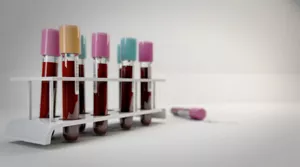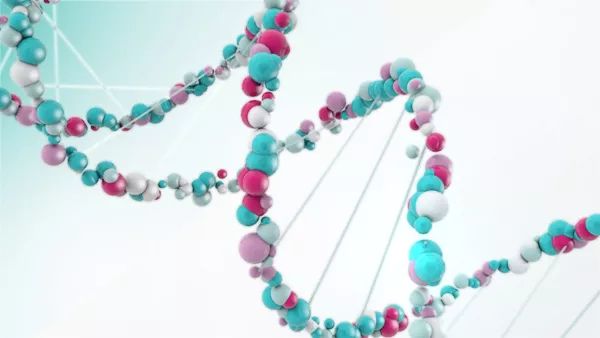
70 years of visual communication
Part one of a three-part series on the 70th anniversary of the Master of Biomedical Communication program
The third floor of U of T Mississauga’s Terrence Donnelly Health Sciences Complex is a study in contradictions. At one end, an archive holds 70-year-old illustrations made from carbon dust brushed into clay-covered cards. Carefully observed, clinically precise and often imbued with a gruesome beauty, these illustrations were used to teach medical professionals about a wide assortment of physiological conditions and pathologies.
At the other end of the floor, graduate students work on 3D animations, augmented reality apps and videogames based on emerging ideas from advanced molecular biology research.
The thread that ties these eerie images together is their power to communicate medical concepts with high visual impact. That power is at the heart of UTM’s Biomedical Communications graduate program, which turns 70 this year.
“We still occasionally hear people refer to what we do here as ‘pretty pictures,’” says Program Director Nicholas Woolridge. “They seem to think there is something about the prettiness that makes them fluffy or non-essential. But there is a growing body of research that suggests attractiveness is actually functionally important. Things that are attractive dispose you to explore them and to forgive them when they are frustrating.”
With medicine and science so prevalent in the news, there has never been a greater appetite for “disposing people to explore.” And with medical concepts growing ever more complicated and counterintuitive, it has never been more frustrating to try to explore them. Technology, audiences and scientific knowledge have all gone through multiple transformations over the life of the program.

That can mean teaching parents about the benefits of vaccination. Or educating diabetic children about how to track their glucose levels. Or teaching postsurgical patients how to monitor and treat their own pain.
The basic principles of the program have remained consistent throughout its history. Illustration does a different job than documentation. Students depict concepts that could not be captured through photographic or video documentation. This was as true in 1945 when the program launched as it is today.
One early carbon-dust illustration depicts a technique for assisting a baby birthing in breech position. The image depicts a baby exiting a womb body first, its head still trapped inside. Illustrated hand positions show how an obstetrician could slip a finger in the baby’s mouth, gaining purchase on the jaw bone, and pull the baby outward with minimal risk of damaging its delicate neck. No camera could capture this multi-level visual explanation of such a delicate procedure.
Today, students are more likely to be working on medical concepts that are even more difficult to visualize—protein binding, neuron firing, RNA splicing, and so on. And, while the Biomedical Communications program is considered a “professional degree,” meaning that most graduates find work outside academica, graduate students also do groundbreaking research.
One team in the program created a trio of animations depicting the same event. In each video, a signal-triggering molecule known as a “ligand” bound to a protein receptor. One depiction is cartoon-simple, while the others add successive layers of complexity.
“For many things, there is what’s coming to be known as desirable difficulty,” says Woolridge. “When things are hard, you are more engaged. It’s harder to follow the molecules when there are all these distracters. But that means you have to pay closer attention.” For people whose job it is to both engage people and to teach them, this kind of insight is both counterintuitive, and very valuable.
Read Part 2 of this series, "Working for a greater good," here >
Read Part 3 of this series, "The origins of Grant's Atlas" here >
Artwork generously provided by Cassandra Cetlin.
